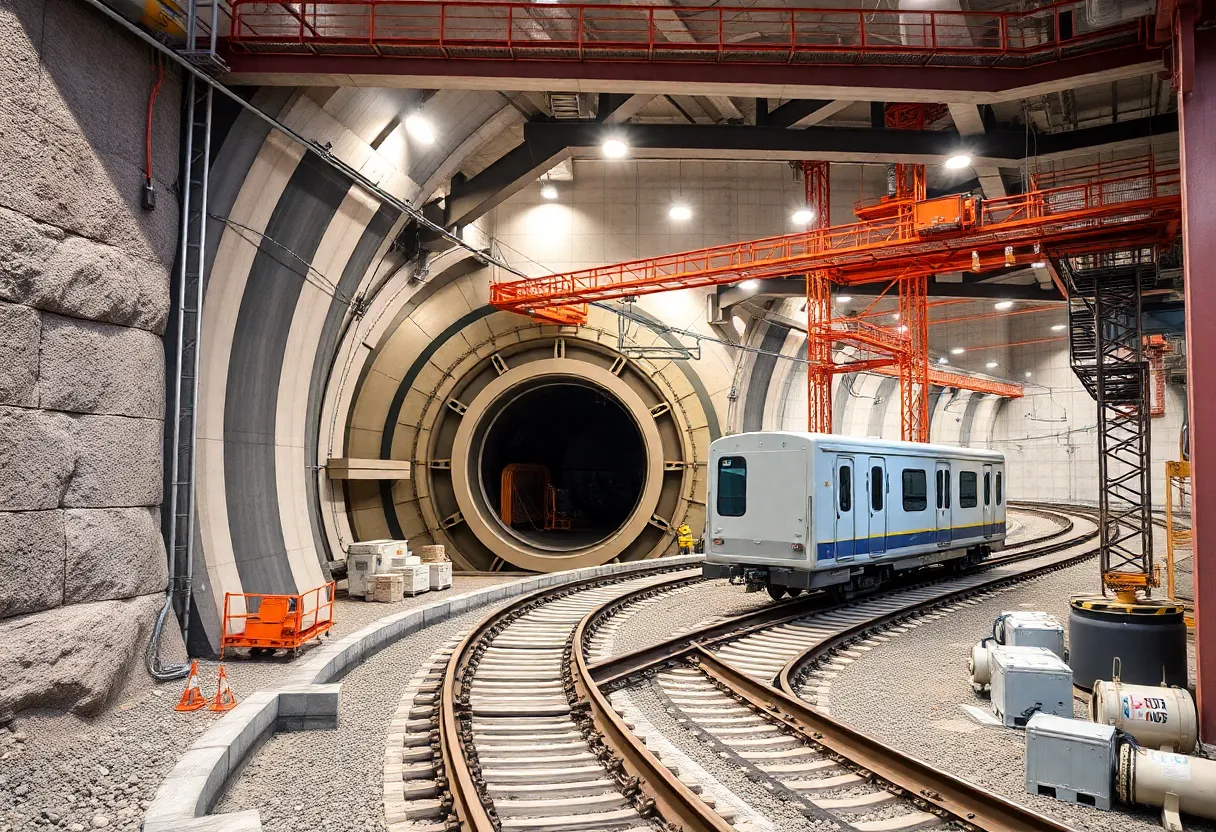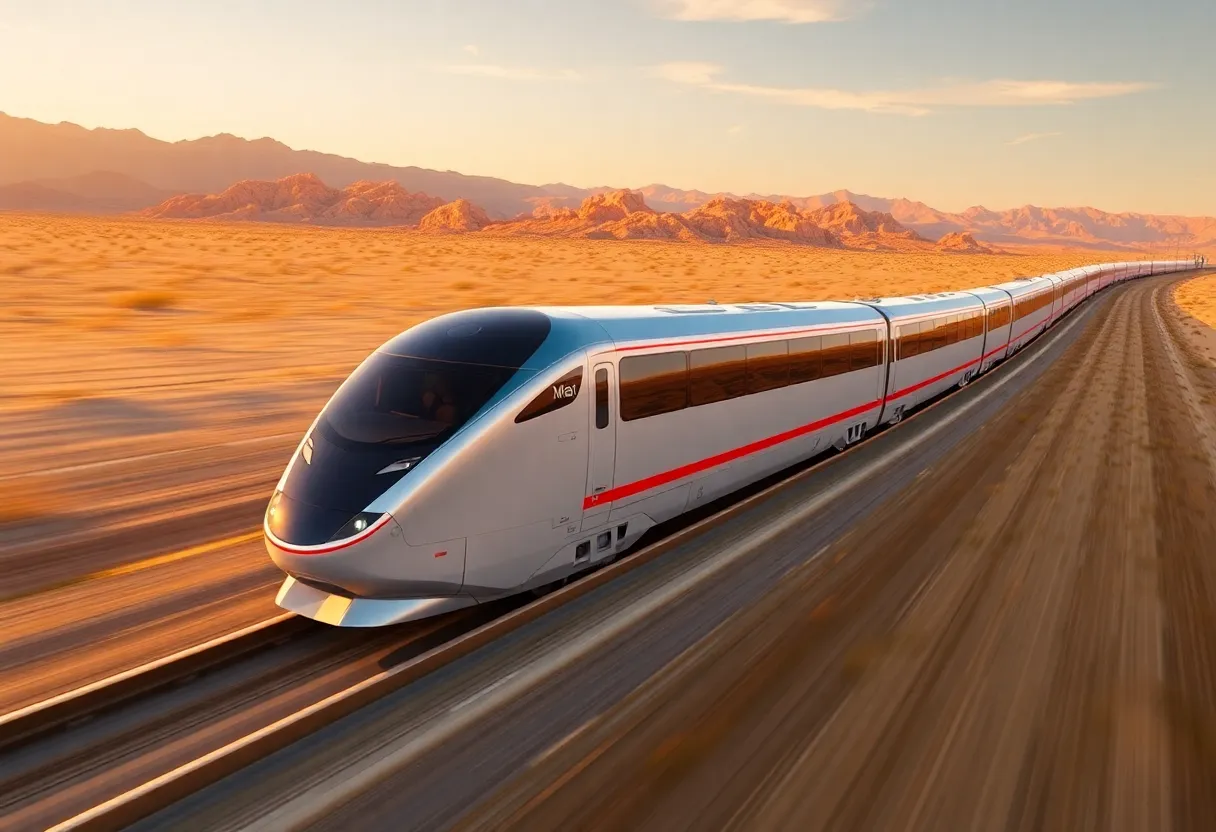News Summary
The Northern Link railway project in Hong Kong aims to revolutionize transportation by utilizing advanced construction methods from the Chinese mainland. This project incorporates super-large-diameter tunnel boring machines and modular construction techniques, which promise significant cost savings and faster completion by 2034. Expert collaboration is set to enhance efficiency and cut costs by up to 30%, while facilitating a unified approach to railway standards in the Greater Bay Area.
Hong Kong’s Northern Link Railway Project to Incorporate Advanced Construction Techniques
The Northern Link railway project in Hong Kong is set to benefit from advanced construction techniques borrowed from the Chinese mainland. This initiative aims to achieve substantial cost savings and ensure a quicker completion timeline, with a target finish date anticipated by 2034.
Use of Modern Technology
Key technologies that will be used in the project include super-large-diameter tunnel boring machines (TBMs) and modular construction methods. The underground railway alignment will stretch approximately 17 kilometers, utilizing TBMs that are outfitted with 5G networks, artificial intelligence, and BeiDou satellite navigation systems. These machines are expected to significantly enhance cost efficiency and productivity in the construction process.
Projected Cost Reductions
By adopting these modern methods and technologies, the project is anticipated to see a reduction in total costs by as much as 30%. This estimate is primarily based on the belief that approximately 70% of the project’s expenses originate from infrastructure development, which includes essential components such as tracks, tunnels, bridges, and stations. Additionally, potential sourcing of electromechanical equipment from Chinese suppliers could contribute to further cost reductions.
Modular Construction Benefits
The incorporation of modular construction allows for station components to be prefabricated off-site. This approach is crucial for bolstering efficiency, as it reduces the assembly time required on-site. By streamlining the construction process, the time needed to complete the project can be notably decreased.
Collaboration with the Mainland
Observations from Hong Kong’s Highways Department underline the expertise of mainland China in railway development, supported by a vast 162,000-kilometer railway network. Earlier this month, the decision to engage mainland construction resources was confirmed, which emphasizes the anticipated benefits of collaboration between Hong Kong and its mainland counterparts.
Design and Execution Improvements
Lawmaker representatives have recognized that this collaboration could enhance project planning, design, and execution. The adoption of mainland innovations in tunnel boring and bridge construction is seen as a way to provide significant advantages to Hong Kong’s infrastructure projects. There is an ongoing effort to introduce national standards for cross-boundary railway projects that align well with the local context and statutory requirements.
Establishing New Standards
The objective of the Northern Link project includes developing a fresh set of specifications that integrates global best practices while accommodating Hong Kong’s compliance needs. As the project progresses, it aims to create unified “Guangdong-Hong Kong-Macao Greater Bay Area standards” for railway development, effectively merging local practices with proven methods from the mainland.
Streamlined Regulations and Integration
Streamlining regulations is essential for facilitating the adoption of mainland standards where applicable. Both Hong Kong and the mainland possess high-standard railway systems, but historical differences in operational practices are present. The integration of advanced TBM technologies and prefabricated methods will play a key role in expediting the construction of essential utility tunnels for various infrastructure efforts, further consolidating the link between the two regions.
Conclusion
The Northern Link railway project represents a significant step forward in Hong Kong’s approach to infrastructure development. By embracing modern construction techniques, both the speed and cost-effectiveness of this project can be notably enhanced. As these efforts unfold, the collaboration between Hong Kong and the mainland could pave the way for a new standard in railway infrastructure, potentially reshaping the future landscape of transport in the region.
Deeper Dive: News & Info About This Topic
Additional Resources
- Tunnelling Journal: CREG U-Shaped TBM Ready For Hong Kong
- Wikipedia: Tunnel Boring Machine
- Global Construction Review: Dragages Hong Kong Completes Four Metro Tunnels
- Google Search: Northern Link Railway Project Hong Kong
- Indian Express: Explained – TBM Tunnel Boring Machine
- Encyclopedia Britannica: Infrastructure
Author: Construction CA News
The CALIFORNIA STAFF WRITER represents the experienced team at constructioncanews.com, your go-to source for actionable local news and information in California and beyond. Specializing in "news you can use," we cover essential topics like product reviews for personal and business needs, local business directories, politics, real estate trends, neighborhood insights, and state news affecting the area—with deep expertise drawn from years of dedicated reporting and strong community input, including local press releases and business updates. We deliver top reporting on high-value events such as the Rose Parade, Coachella, Comic-Con, and the California State Fair. Our coverage extends to key organizations like the California Building Industry Association and Associated General Contractors of California, plus leading businesses in technology and entertainment that power the local economy such as Apple and Alphabet. As part of the broader network, including constructionnynews.com, constructiontxnews.com, and constructionflnews.com, we provide comprehensive, credible insights into the dynamic landscape across multiple states.




